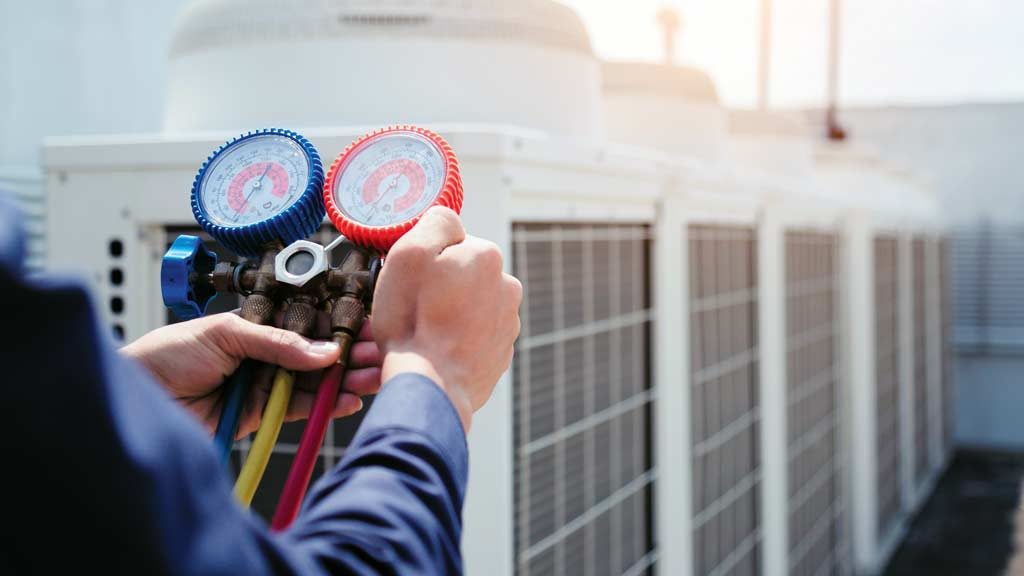With aim of protecting the Earth’s ozone layer, an environmental awareness training session on the proper handling of refrigerants demands a lot from its attendees.
Conducted by the Heating, Refrigeration and Air Conditioning Institute of Canada (HRAI) and delivered by approved partners including community colleges, the Ozone Layer Protection Awareness Program for Air Conditioning and Refrigeration Systems covers a lot of topics.
Based on Environment Canada’s “Code of Practice for Elimination of Fluorocarbon Emissions in Refrigeration and Air Conditioning Systems, it deals with environmentally-correct equipment design and the proper handling of refrigerants and is intended to prepare participants for complying with Federal and Provincial refrigeration and air conditioning systems regulations.
Just some of the subjects of the theory-only course include the Science of Ozone Depletion, the Canadian Environmental Act, Federal Halocarbon Regulations, provincial regulations, recovery/reusing/recycling/reclaiming technologies, plus installation and servicing.
Although the HRAI has just introduced an online course which students can complete at their own pace, the in-class session is approximately seven hours long and then the students have to write an open book exam and achieve a 75 per-cent passing mark.
In this case the book is an approximately 100-page manual developed by HRAI and Environment and Climate Change Canada.
“We’re surrounded by refrigerants,” says HRAI institute’s manager of education delivery, Angie Mantei, citing residential air conditioning, commercial tower chillers, car air conditioners, and supermarket freezer and cooling chests, all of which require refrigerants.
And the improper installation, servicing, or disposal of refrigerants contributes to the depletion of the ozone layer, which is why the program was first developed in the 1990s — with a major revision in 2016 to reflect new changes in environmental regulations, she says.
The program is mandatory for anyone requiring an Ozone Depletion Prevention (ODP) Card and that covers a wide range of trades and technicians in fields as diverse as construction, the automotive industry, and appliance manufacturing. It is not a replacement and does not supersede any of the required training programs for those trades, she emphasizes.
Wholesalers who sell refrigerants are required by law to ask for that card and then enter the purchase transaction into their computer system. Building and safety inspectors can also ask to see the card, says Mantei.
HRAI manages the program for Environment Canada and the Ministry of Environments across Canada with the exception of the Manitoba Ozone Protection Industry Association.
Although each province has its own regulations and correct procedures, the manual is applicable across the nation. Because of the volume of HVAC work in Ontario, the manual lists and describes the various sections of the province’s Regulation 463/10 which deals with Ozone Depleting Substances and Other Halocarbons.
In Ontario there is a five-year renewal process, meaning all certifications issued have an expiry date and are valid for that five-year period. The renewal process is managed online and is designed to obtain current contact information on all certification holders in Ontario. In all other provinces, the certification is obtained through attending the course and it is a one-time requirement, she says.
Community colleges conduct the training as an integral component of their various HVAC-related programs such as Georgian College’s Gas Technician program. Usually, the training is conducted at the beginning of those programs.
Stand-alone sessions are usually offered twice a month at HRAI’s Mississauga Ontario headquarters, although availability is based on demand, says Mantei.
In selecting potential instructors, HRAI looks for candidates who have worked in the HVAC industry and have some teaching experience. Before being chosen, they have to have completed a ‘train the trainer’ course with a minimum 85-per-cent passing mark.
“We are teaching this (the course) today with the goal of leaving future generations with a better environment than we have now. In the world it may seem hard to make a change, but we can all take small steps that will together mean real and meaningful change,” says John McTaggart, the institute’s lead ozone awareness instructor.



I’m in school getting my G2! How can I get started in a refrigeration course? Any tips?